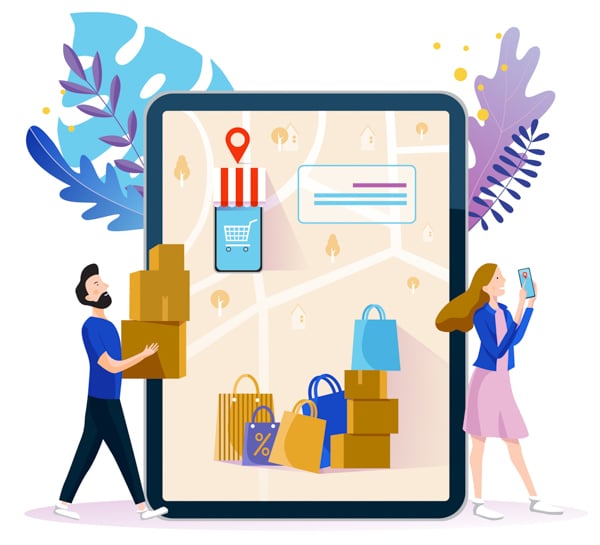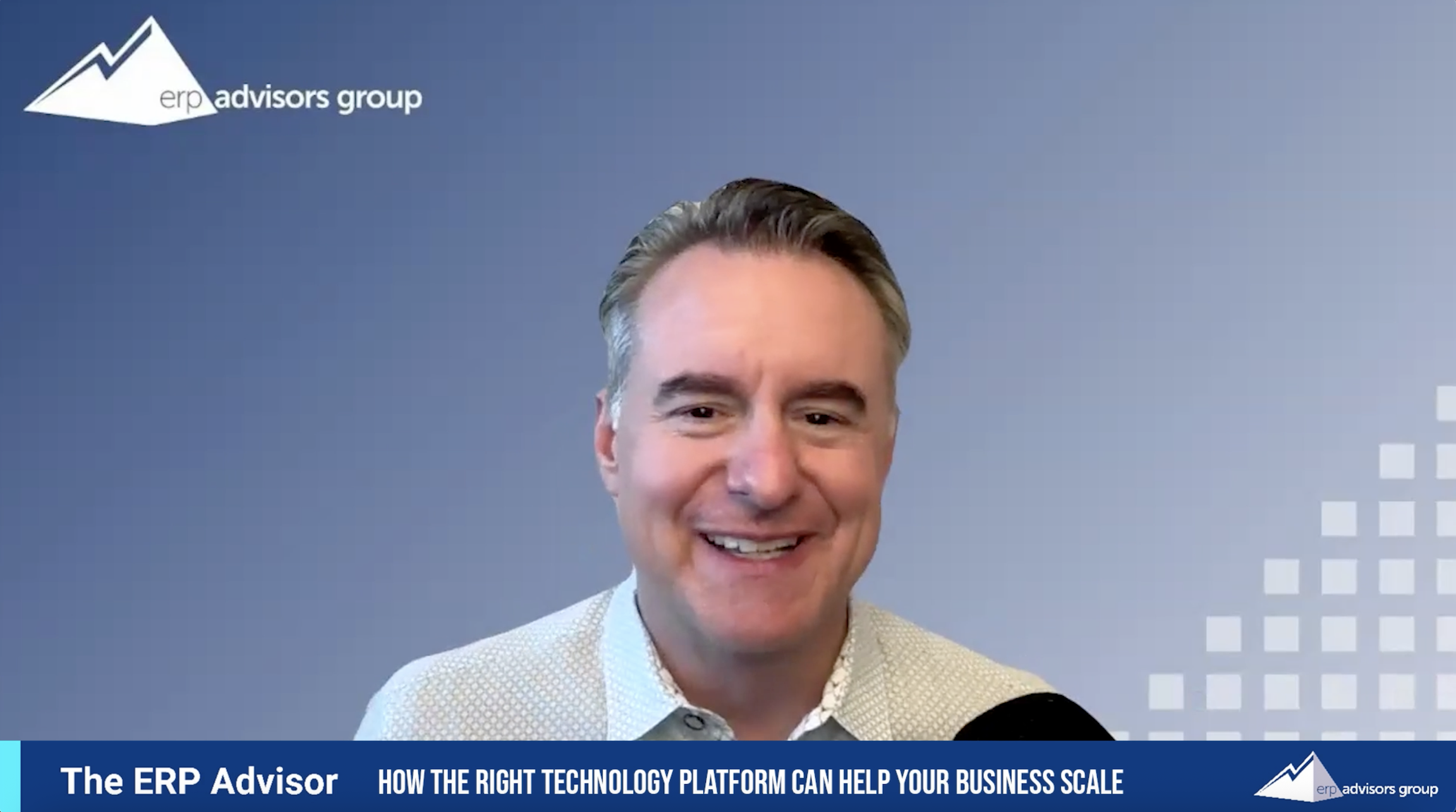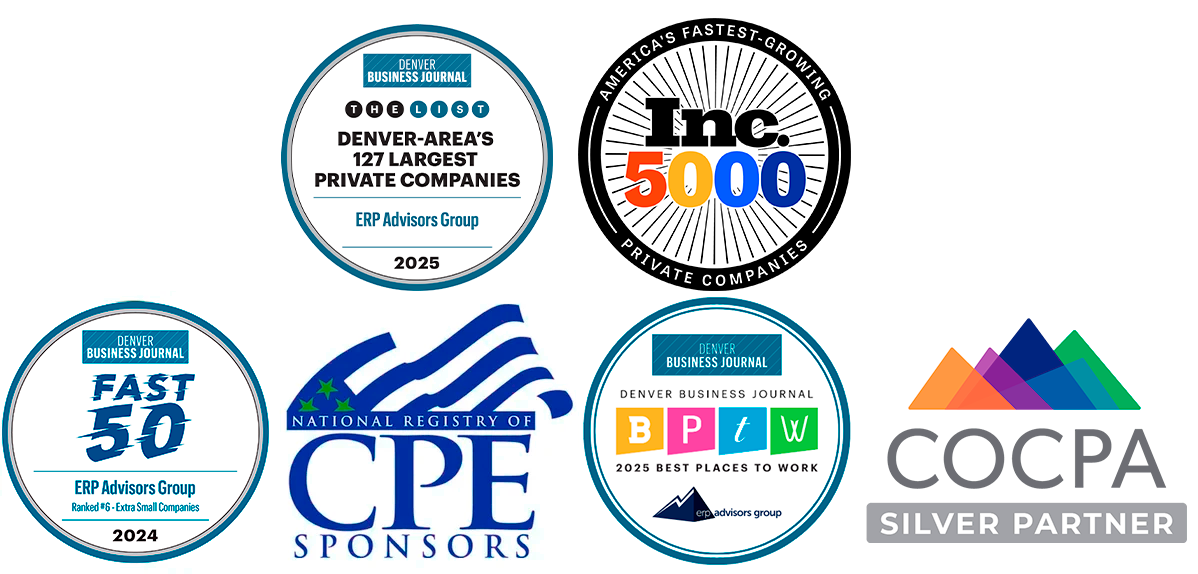
We live in a recurring economy. From razor blades to TV shows to dog food, almost anything we need can be purchased on a subscription. Business models that can shift to recurring can drive real enterprise value and ongoing revenue streams. In this episode of The ERP Advisor, we discuss how you can leverage software to automate your recurring revenue products and services.
Can ERP Software Help You?
ERP Software continues to evolve and helps businesses satisfy customer needs. Some types of automation also benefit companies by helping to facilitate recurring revenue. Recurring revenue automation is a broad category of software that spans multiple functions, including everything from billing to order configuration. As software advisors, we have helped countless businesses automate manual processes.
For many businesses, their manual processes work, but they are not efficient and often present pain points. Automation brings efficiency, increased accuracy, and targeted customer needs to the forefront. A good example is billing. Many companies struggle with the continuous circle of everything from manual invoicing to collections. Software options are available that allow businesses to automate all or some of these processes, depending on their unique wants and needs. Software can also save time with configured workflows that facilitate computerized revenue streams. The bottom line is, there are proven ways to automate your operations while also reducing the likelihood of errors.
Recurring revenue models have always existed. Take, for example, telephone or utility bills--they have been around as long as you can remember and occur at a usual set frequency (usually monthly). Today's customers have come to expect the convenience of paperless bills and payment routines that require little attention. People purchase everything from food to Wi-Fi in an automated fashion, sometimes with multiple options that allow them to choose their payment options. These are referred to as subscription plans. The good news is that software can actually help to manage subscription offerings. It is easy for clients and a seamless revenue flow for businesses.
Sometimes we find that companies are unaware of these advanced automation options, and more importantly, are unaware of the potential benefits to businesses of all sizes. The software is flexible and configurable, so automation can be introduced in phases. Billing automation (mentioned above) typically offers a high return on investment. Companies often move to automate additional areas such as product or contract quotes. Some businesses integrate technology to support subscription-based models, where a product or service is being provided at regular intervals.
How an E-Commerce Company Leveraged Technology
Leveraging the power of technology is sometimes best understood by using an example. Dollar Shave Club is an e-commerce company, and they are supported by revenue cycle automation technology. It is built around a cloud-based direct-to-consumer subscription model. The company is a growing success story powered by its commitment to advanced technology and customer satisfaction.
As the name implies, Dollar Shave Club sells men's razor products online. It began in 2011 as a small entrepreneurial business, and its ability to scale was strategically supported by software. The technology was implemented in a way that placed customer choices and considerations first. Today, they tout well over three million subscribed customers.
Sometimes the success of a product or service is tied to new product innovation. Dollar Shave Club did not invent superglue, and it almost certainly did not reinvent the razor. What it did do, however, was create a more affordable and convenient alternative avenue for men to buy razors. Did the world need another razor company with companies like Gillette who reportedly owned over 70% of the business when Dollar Shave Club first launched?
Few would argue that within this highly competitive product category, it took some guts and a clear vision to venture into. Many would call it "creative disruption." Dollar Shave Club was acquired in 2016 for $1 billion dollars by Unilever, and at the time, only employed 190 employees.
Dollar Shave Club reinvented the process more than the product (although customers generally rate their products highly). It should come as no surprise that men do not enjoy traveling to a store to encounter a Lucite-type locked box holding pricy razors and blades. For them, it is viewed as a negative, but necessary experience. Dollar Shave Club flipped that paradigm by allowing men to purchase well-priced products that can be ordered from anywhere with ease and automatically replenished. The routine has become more appealing, controllable, convenient, and affordable.
The mere presence of giants like Amazon might have been enough of a deterrent to avoid starting Dollar Shave Club. For the original owners, it was not. Ironically, some of the technology that Dollar Shave Club started out with was cloud computing, mostly offered by Amazon Web Services.
The brand has had to grow and evolve, and in addition to razors, it has since expanded its product line to men's grooming products, as well as launched in the UK. In addition, it made the wise decision early on to always outsource production and eventually distribution as well. These decisions, along with their business model, highlight what we have been saying about Dollar Shave Club's creative and strategic use of technology.
However, creative excellence extends beyond just technology. Dollar Shave Club is a marketing phenomenon. How many CEOs have racked up greater than 26 million views on a YouTube video that they personally appeared in? Thus, continuing to create demand and remain relevant is part of their challenge.
Dollar Shave Club's customer-centric experience and humorous messaging are spot on with its audience. You would be hard-pressed to find a simpler website. You can buy similar blades from the Korean factory where Dollar Shave Club's blades are made, but people are not lining up to do so. So, why do men continue to relate to their products, convenience, and pricing? Because it works.
Technology can enable business growth, but it does not guarantee it. Dollar Shave Club's branding and marketing are unique, ever-evolving, and targeted to its male audience. Rather than big-budget marketing campaigns, the creative content is developed internally.
Dollar Shave Club is a conglomeration of clever marketing and getting the word out primarily via social media. Their branding goal is to appeal to "the regular guy," and they spend lots of time soliciting feedback from the average Joe. Unlike other companies that spend millions of dollars on advertising and tirelessly chase trends, Dollar Shave Club has a grassroots feel. Their intentional "non-corporate" marketing strategy has managed to capture and retain a dedicated following targeted to appeal to what men need. Other companies like Gillette have their own shave clubs and technology but lag the subscription success of Dollar Shave Club (estimated to now own approximately 51% of the online razor business).
This is a good example of how technology can support a company's vision, but ultimately success depends on more than just the technology. Therefore, in "ERP land," we teach the importance of companies having their own well-developed strategy before introducing new technology. Included is a chart that describes some of the software that we find most useful in a subscription-based business.
Whether you are trying to automate price changes across your system, execute real-time invoices for customers, or increase recurring revenue via a subscription-based model, today's modern ERP software can help. Let ERP Advisors Group provide you with expert independent guidance and advice.
Benefits of Subscription-Based Software
Order Configuration
- Customer product pricing (company can adjust prices seamlessly across the board)
- Accommodates global differences (taxes, shipping, currency)
- Can offer discounts, pricing incentives, and segregate by customer type
- Customer-centric order sequencing and consumer messaging
- Assists in insightful product development (what is selling best and other opportunities)
Automated Payments
- Card and address verification (reduces fraud chargebacks)
- Dunning communications including retry logic and reminder emails
- Multiple payment gateways and automatic card updates
- Secure checkout (PCI DSS compliant)
- Auto-generated receipts and invoices
- Real-time management analytics
Fulfillment
- Subscription set-up and management (including customer managed/initiated)
- Warehouse and transportation integration
- Software key generation (generation in cryptography)
Accounting & Revenue Management
- Payment source by breakdown
- Accounts for discounts and promotions in real-time
- Trackable revenue recognition
- Enables predictive forecasting
- Automated renewal services
- CRM integration for visibility





